The Museu Nacional de Arte Antiga (National Museum of Ancient Art) is considered the most important museum in Lisbon. It has a large collection of Portuguese art, complemented with a fine selection of foreign masterpieces.
History
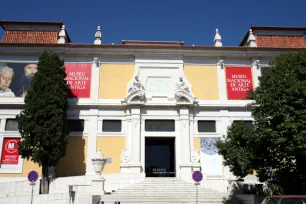
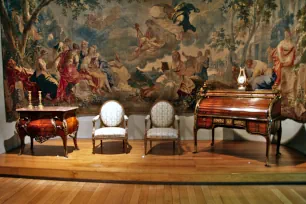
The museum is housed in a seventeenth-century palace that was built for Francisco de Tavora, the first Count of Alvor. The Marquis of Pombal purchased the palace in 1770. It used to have green windows and for that reason the museum is sometimes referred to as the Museu das Janelas Verdes (Green Windows Museum).
In 1882 an exhibition of Iberian art was organized in the halls of the palace. The success of this exhibition led to the creation of the National Museum, which opened its doors to the public on May 11, 1884.
The nucleus of the museum’s collection consists of religious art confiscated from monasteries after religious orders were abolished in 1834. The museum focuses not only on Portuguese art but also art that illustrates its colonial history as well as foreign art that influenced local artists.
Highlights
The Museum of Ancient Art has a large collection of Portuguese paintings from the fourteenth to the nineteenth centuries. Many of these paintings have a religious theme, such as the Panels of São Vicente de Fora, a masterpiece from the fifteenth century attributed to Nuno Gonçalves. The panels, created as an altarpiece, depict the adoration of St. Vincent of Saragossa, patron saint of Lisbon. Some sixty people are depicted in detail on the panels.
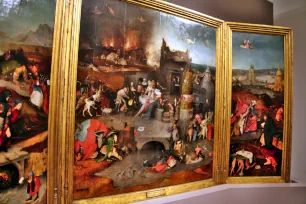
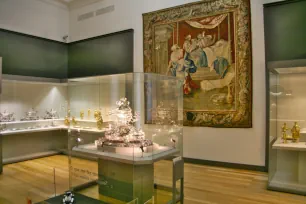
The museum also owns a significant number of paintings from non-Portuguese artists, including German, Dutch and Flemish masters. Highlights include Dürer’s St. Jerome, and the famous triptych of the Temptation of Saint Anthony by Hieronymus Bosch, who vividly displayed the hallucinations Saint Anthony endured during his pilgrimage in the desert.
The museum also has a large collection of non-European art, mainly focused on the discoveries of Portuguese explorers and the Portuguese empire. Of particular interest is the Namban art, Japanese paintings that show Portuguese explorers arriving in Japan. The paintings were created by Japanese artists in the sixteenth century and accentuate the distinct features of Europeans – which were called Namban or Southern Barbarians – such as large noses, large mustaches and conspicuous clothing.
The museum has more than just paintings: there is a fine collection of Chinese ceramics as well as Portuguese furniture, sculptures – including small fifteenth-century wooden statues from the Low Countries – as well as tapestry, glass and ivory. The museum also owns treasures – jewelry, gold, silver – from monasteries. These treasures were often donated by affluent citizens. A highlight is the monstrance of Belém, created in 1506 from gold that was brought to Lisbon by Vasco da Gama.
Sculpture Garden
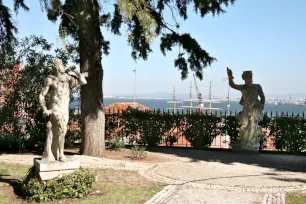
If you’re starting to become overwhelmed by the large number of art objects or if museum fatigue hits you, head to the beautiful museum garden that can be accessed from the ground floor. The garden is decorated with sculptures and offers nice views over the Tagus river. Here you can relax and have a drink or a snack at the local café.

